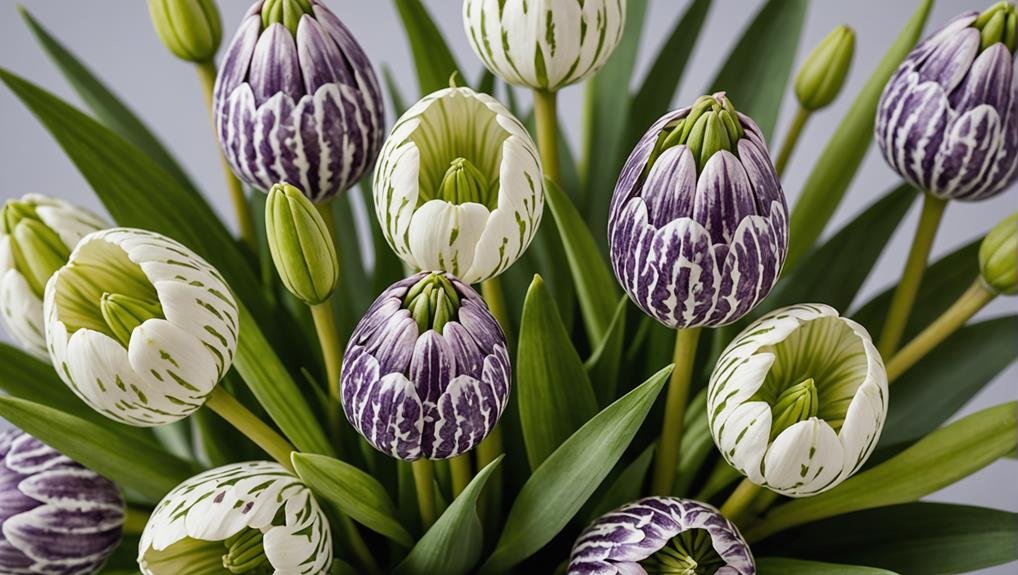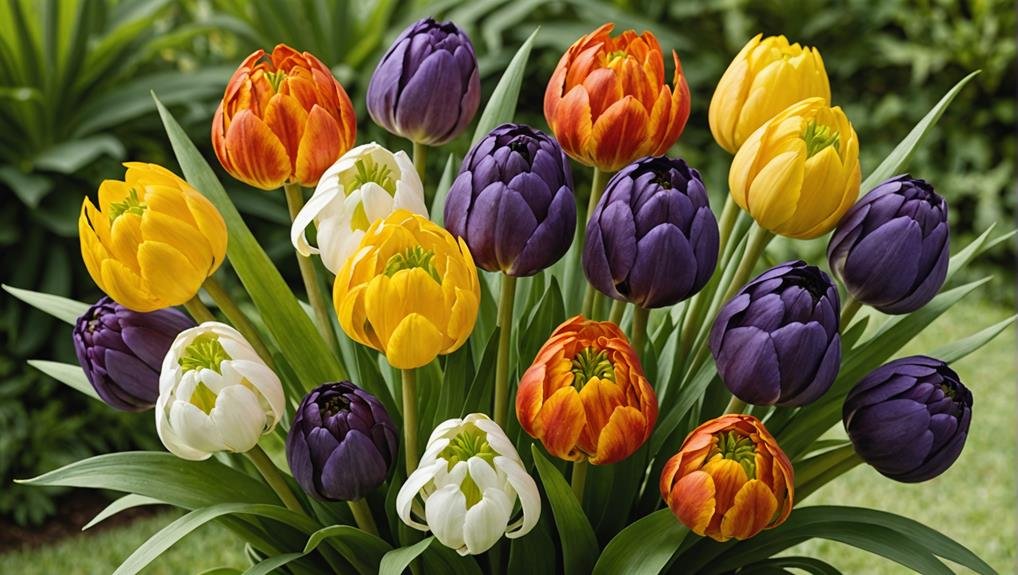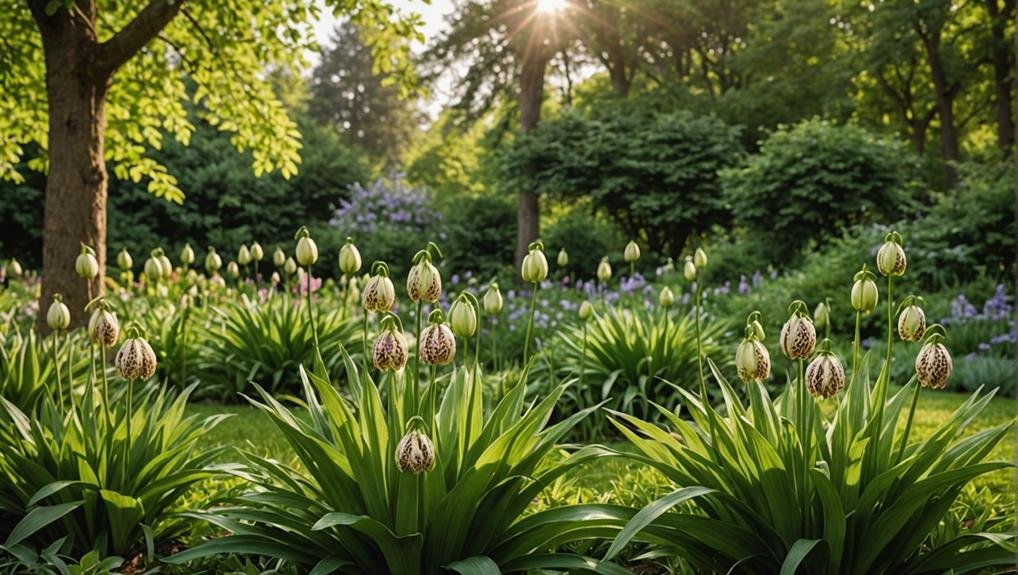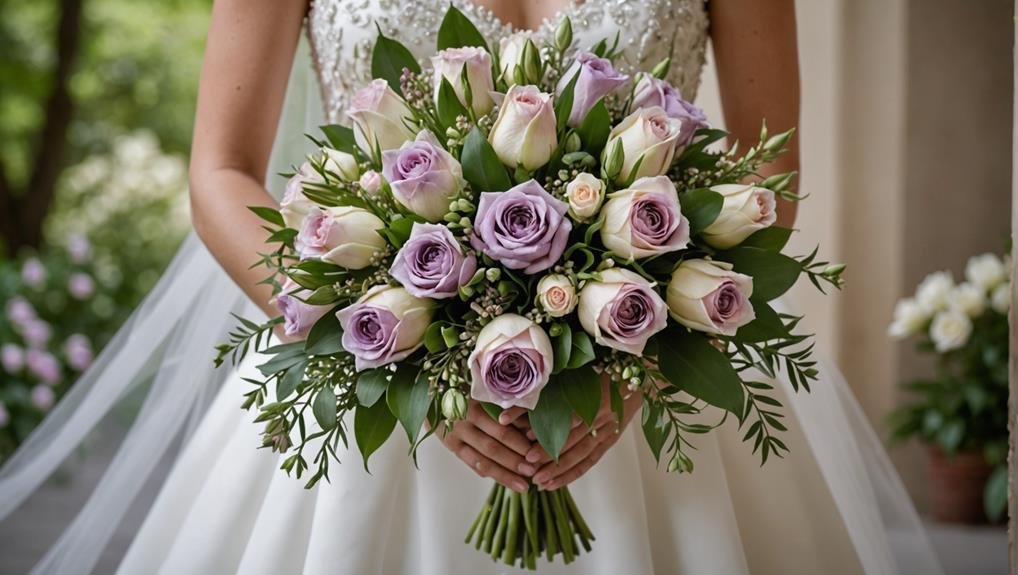When planning a wedding, choosing the right floral arrangements can greatly enhance the ambience and aesthetic of the event. Among the myriad of floral options available, Fritillaria stands out for its delicate, nodding bell-shaped blooms and wide range of colors, from deep purples to vibrant oranges. Originating from the regions of Turkey, Iran, and Iraq, this flower not only brings a touch of exotic elegance but also symbolizes humility, grace, and enchantment. To explore how Fritillaria can uniquely contribute to your wedding’s charm and sophistication, it is crucial to understand its physical characteristics, cultural significance, and ideal growing conditions.
Flower Overview

Fritillaria, a delicate and elegant flower, originates from the regions of Turkey, Iran, and Iraq, known for its distinctive bell-shaped blooms on short stems.
In the Language of Flowers, Fritillaria carries a unique symbolism, often representing humility, grace, and enchantment. These attributes make it a fitting choice for wedding floral arrangements, where conveying subtle messages through flowers is a cherished tradition.
Despite its understated allure, Fritillaria is not widely recognized in the domain of fresh cut flowers, primarily due to its peculiar wet fur scent. However, its availability in wholesale flower markets during the Spring season presents an opportunity for florists and event planners to incorporate this refined bloom into their designs.
Typically sold in wraps of 50 stems, Fritillaria’s stem length never exceeds 30 centimeters, making it an ideal candidate for adding a touch of elegance and charm to spring wedding bouquets and centerpieces.
When purchasing Fritillaria in bulk, buyers can conveniently order online, with direct delivery options tailored for events and businesses. This ease of procurement, coupled with its symbolic significance, underscores Fritillaria’s potential to enhance the aesthetic and sentimental value of wedding floral arrangements.
Physical Description
Characterized by their delicate, nodding bell-shaped blooms, these flowers exhibit a unique elegance that is both subtle and enchanting. Originating from Turkey, Iran, and Iraq, Fritillaria plants possess a distinctive charm that sets them apart from more commonly seen wedding flowers. Their bell-shaped flowers are delicate and often droop gracefully, creating a sense of movement and fluidity within floral arrangements.
One of the most notable aspects of Fritillaria is their stem length, which typically does not exceed 30 centimeters. This relatively short stem length makes them ideally suited for intimate bouquets and tabletop centerpieces.
The petal texture of Fritillaria adds to their allure; the petals are smooth and slightly waxy, giving them a refined appearance that complements a variety of other floral elements.
Despite their visual appeal, Fritillaria’s fragrance profile is somewhat less inviting. The flowers emit a scent reminiscent of wet fur, which can be off-putting but is often overcome by the surrounding blooms in an arrangement.
Nevertheless, their unique form and texture make them a valuable addition to any wedding floral design, contributing an element of understated sophistication and natural beauty.
Available Colour Varieties

The diverse color palette of Fritillaria, including shades of purple, white, orange, yellow, and red, offers a myriad of possibilities for creating striking and personalized wedding floral arrangements. Each color variety provides a unique and distinctive look, making Fritillaria an excellent choice for enhancing bouquet diversity and visual appeal. The wide range of hues available allows for creative color combinations that can be tailored to suit any wedding theme or color scheme.
Incorporating Fritillaria into floral arrangements offers numerous customization options. For instance, the vibrant orange and red varieties can add warmth and energy, perfect for autumn or rustic-themed weddings.
Meanwhile, the elegant white and soft yellow Fritillaria can contribute to a more classic or romantic atmosphere, ideal for traditional or garden-inspired ceremonies.
The purple shades, with their rich and regal tones, are well-suited for modern or opulent wedding themes.
Latin Name and Taxonomy
Understanding the botanical background of Fritillaria can further enhance its appreciation and effective use in wedding floral arrangements. Fritillaria, a genus within the Liliaceae family, comprises a variety of delicate flowering plants celebrated for their unique beauty.
The Latin name for one notable species, Fritillaria meleagris, aptly translates to ‘checkered lily’, reflecting the distinctively patterned petals that make it a popular choice for sophisticated floral designs.
Taxonomically, Fritillaria species are classified under the order Liliales, which includes other well-known ornamental plants. This taxonomic classification is essential for understanding the plant’s characteristics and care requirements, thereby assisting florists and wedding planners in creating stunning arrangements.
To summarize the key points of the botanic nomenclature and taxonomic classification of Fritillaria:
- Genus Name: Fritillaria belongs to the Liliaceae family, synonymous with elegance and beauty in floral contexts.
- Species Example: Fritillaria meleagris, or ‘checkered lily’, is renowned for its unique patterned petals.
- Taxonomic Classification: Falls under the order Liliales, indicating its close relation to other ornamental lilies.
Geographical Origins

Originating from the regions of Turkey, Iran, and Iraq, Fritillaria is celebrated for its delicate bell-shaped flowers and unique nodding appearance. These regions provide the ideal climate and soil conditions for the cultivation of this elegant flower, which has become a beloved choice in floral arrangements despite its relatively limited availability.
Historically, Fritillaria has held significant symbolic meanings in its native regions. In ancient Persia, the flower was often associated with themes of humility and grace, reflecting its modest, downward-facing blooms. The regional popularity of Fritillaria can be traced back centuries, with its presence in traditional gardens and artistic representations.
| Region | Symbolic Meanings | Historical Significance |
|---|---|---|
| Turkey | Humility, Elegance | Featured in Ottoman gardens |
| Iran | Grace, Modesty | Depicted in Persian art |
| Iraq | Renewal, Springtime beauty | Used in cultural ceremonies |
The historical significance of Fritillaria extends beyond mere aesthetics. In Turkey, the flower was a staple in the opulent gardens of the Ottoman Empire, symbolizing elegance and refinement. In Iran, it has been immortalized in Persian art and literature as a symbol of grace and beauty. In Iraq, Fritillaria is often associated with renewal and the beauty of springtime, frequently featured in cultural ceremonies and traditional celebrations.
Season Availability
Fritillaria blooms are a seasonal delight, gracing floral arrangements primarily during the Spring months. Their availability spans a brief 3-4 months, making them a coveted choice for seasonal weddings and spring florals. These delicate flowers are particularly favored for their petite stature, with stem lengths not exceeding 30cm, adding an element of elegance and charm to any bouquet.
For event planning and floral arrangements, understanding the seasonal availability of Fritillaria is essential. Here are key points to ponder:
- Wholesale Markets: Fritillaria is typically sold in bundles of 50 stems at wholesale markets, ensuring that floral designers have ample supply for crafting intricate and beautiful arrangements.
- Flower Availability: Due to their limited blooming period, securing Fritillaria for spring events requires early planning and coordination with suppliers.
- Spring Florals: These flowers are an ideal addition to spring wedding bouquets, offering a unique and sophisticated touch that complements other seasonal blooms.
Incorporating Fritillaria into floral arrangements during their peak season not only enhances the aesthetic appeal but also aligns with the natural rhythms of flower availability, adding a touch of authenticity and freshness to any spring event.
Growing Conditions

To cultivate Fritillaria successfully, it is essential to provide well-drained soil and ample sunlight. Proper soil preparation is crucial, as Fritillaria thrives in environments where excess water can drain away easily to prevent bulb rot. Incorporating organic matter into the soil can improve its structure and drainage capabilities.
Sunlight requirements for Fritillaria include full sun to partial shade, ensuring that the plants receive sufficient light for robust growth.
Fritillaria is best suited to cool temperatures and performs optimally in USDA zones 5-8. It is vital to plant the bulbs in the fall at a depth of 4-6 inches to align with their temperature preferences. Proper spacing, typically 6-8 inches apart, is also necessary to allow adequate air circulation and reduce competition for nutrients.
During the growing season, a consistent watering schedule is required to keep the soil moist but not waterlogged. However, care must be taken during the dormancy period to keep the bulbs dry, as excessive moisture can lead to decay. Providing appropriate dormancy care by ceasing watering and ensuring the soil remains dry can help maintain the health and longevity of the Fritillaria bulbs.
Cultural Significance
Often revered for its rich cultural heritage, Fritillaria holds significant meaning in several Middle Eastern societies, including Turkey, Iran, and Iraq. The flower’s symbolism and uses in these regions are deeply rooted in their traditions and beliefs.
In Turkish culture, Fritillaria is often associated with protection from evil and is believed to bring good luck, which makes it an appealing choice for various ceremonial applications, including weddings. This belief in its protective powers underscores its role in enhancing the auspiciousness of matrimonial events.
Iranian folklore places a different emphasis on Fritillaria. Here, the flower is linked with love and fertility, making it a symbol of conjugal harmony and prosperity. Additionally, its use in traditional medicine is well-documented, where it is valued for its presumed health benefits, further enriching its cultural significance.
In Iraq, the historical significance of Fritillaria is profound, largely due to its medicinal uses and benefits. For centuries, the bell-shaped flowers have been utilized in various remedies, highlighting their importance beyond mere ornamental beauty.
In summary, the cultural significance of Fritillaria can be encapsulated in three main points:
- Symbolism in weddings
- Traditional folklore beliefs
- Medicinal uses and benefits
Typical Use in Weddings

Incorporating Fritillaria into wedding floral arrangements adds a delicate and unique charm, enhancing the overall aesthetic of the event. The bell-shaped flowers of Fritillaria, which bloom on short stems, are a popular choice among wedding florists for their ability to create a whimsical and romantic atmosphere, particularly in spring weddings. Their nodding flowers make them an excellent addition to a variety of wedding decor elements, including table arrangements, bridal bouquets, and ceremony decor.
For table arrangements, Fritillaria can be used to add an elegant touch to centerpieces, often paired with other spring flowers to create a cohesive and visually appealing display.
In bridal bouquets, Fritillaria’s delicate blossoms complement a wide range of flower types, adding a unique and sophisticated accent to the bride’s ensemble.
Ceremony decor also benefits from the inclusion of Fritillaria, where these flowers can be used to adorn altar arrangements, aisle markers, or even hanging installations, contributing to the overall romantic and enchanting setting.
Alternative Flower Types
When considering alternative flower types for wedding arrangements, blooms like peonies, ranunculus, and dahlias offer equally enchanting and versatile choices. These alternatives can bring a unique touch to bridal bouquets and centerpieces, catering to couples seeking non-traditional options for their special day.
Peonies: Known for their lush, full blooms and delicate fragrance, peonies are a popular choice for bouquet alternatives. Their large petals create a romantic and luxurious atmosphere.
Ranunculus: With their tightly packed petals and vibrant colors, ranunculus flowers add texture and depth to unique arrangements. They are ideal for creating intricate and eye-catching designs.
Dahlias: Dahlias are celebrated for their wide range of sizes and colors, making them perfect for adding a bold statement to wedding decor. Their intricate petal structures provide a dramatic touch.
Choosing these non-traditional options allows couples to tailor their floral arrangements to reflect their personal style and preferences. Whether aiming for a classic, whimsical, or contemporary look, these bouquet alternatives guarantee a memorable and visually stunning celebration.
